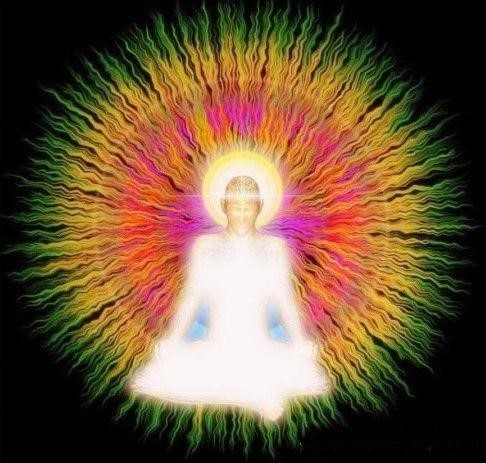Uncertainty as Sunyata (Buddhist Emptiness) By Adrian Chan-Wyles PhD
Adrian Chan Wyles – to Mr Nick Bishop (Advanced Ch’an Dao Student) 22.11.15
The Buddha’s position is that reality is ‘empty’ of greed, hatred and delusion, and as these three taints are the justifying constituents of ‘self’ – reality is also ‘free’ of any notion of a ‘permanent self’. However, the Buddha uses the term ‘emptiness’ as an antidote to the habitual generation and manifestation of greed, hatred, and delusion in the mind in relation to an assumed permanent self, and the manifestation of thoughts, speech and actions in the physical that induce and perpetuate suffering for the individual. The Buddha does not mean that ‘emptiness’ in and of itself is the ultimate reality, but that reality is ‘empty’ of a ‘permanent’ self. Once what is ‘false’ is ‘emptied’ from the mind (and body), then reality (as ‘nirvana’ the extinction of deluded desire that is suffering) becomes self-evident. This is because reality is not conditioned by the three taints (and belief in self) but only obscured by them. The path toward enlightenment for a Buddhist is that of the removal of the obstacles that obscure the natural and unconditioned reality of nirvana from being self-evident. It is clear that the Buddha is denying the existence (or legitimacy) of a ‘permanent self’ (atma) as found within conventional Brahmanism, as the entire Brahmanic view of the universe hangs on this non-existent entity. The Buddha does not speculate on any other notions of ‘self’, but limits his critique to the conditions within which he lived, but as ‘atma’ is anomalous with the Judeo-Christian ‘soul’ (or ‘psyche’) concept, many Western Buddhists (including Christians) use the Buddha’s method of deconstruction to deepen their understanding of reality and their place within it. The Buddha’s path is purely philosophical (and not religious) as it seeks, through the use of logic and reason, to free the mind (and body) from the obscuring psychological, emotional and behavioural patterns that are suffering-inducing, and which obscure or sully reality in its pristine and unconditioned state. Emptiness as the Buddha uses it is always referring to the mind being ‘empty’ of ‘something’ – this means that reality is not just ‘empty’ but also contains all things (fullness). The Buddha’s emptiness is the mind (and body) freed of any and all ‘klesa’ or ‘defilements’ that emerge out of the psychic fabric of the mind (and brain). In this respect ‘emptiness’ is a method that should not be confused with the ‘destination’. The true or exact import of the Buddha’s use of the term ‘emptiness’ is that it is both ‘empty’ of ‘something’ (i.e. greed, hatred, and delusion and self) and in the higher stages of development, also ‘empty’ of ‘itself’ (i.e. ‘emptiness’ is ‘empty’ of ‘emptiness’). This being the case, the Buddha’s use of ‘emptiness’ is purely developmental (i.e. ‘epistemological’) and should not be confused with a statement of an ultimate view of reality (i.e. ontological). Emptiness is not nihilism as the Buddha never denies the existence of material reality, and emptiness should not be confused with it. The middle way of the Buddha is the exact psycho-physical mid-point at the centre of reality that is ‘empty’ of obscuring and suffering-inducing falsifications. As everything is possible at this mid-point – the tyranny of perceiving the material universe as one-dimensional is transcended through a superior insight (i.e. ‘virtue’ in the Chinese tradition), and it is understood that ‘certainty’ is part and parcel of this oppression. Therefore nothing is certain because all is now ‘free’ to move (or not move), to be ‘still’ (or not be ‘still’), as conditions require. Uncertainty becomes three-dimensional ‘freedom’ and indicative of a ‘reality’ unobscured by ‘certainty’ (i.e. the false belief in ‘permanence’). This type of Buddhist assessment appears to over-lap with the philosophy of Quantum Physics. What Heisenberg discovered through analysing the behaviour of sub-atomic particles – the Buddha discovered by analysing physical matter, sensation, perception, thought formation, and consciousness (as recorded in his Four Noble Truths). When obscuring delusion is ‘cleared’ from the mind/brain through meditation and behaviour modification, reality manifests. When ‘emptiness’ is ‘free’ of obscuring ‘emptiness’, then the consciousness becomes expansive and all inclusive – in other words emptiness contains all things, and all things are ‘empty’ at their root – hence there is not a single thing to be ‘certain’ about. Of course, ‘certainty’ and ‘uncertainty’ constitute a ‘duality’ that must be reconciled so that ‘uncertainty’ becomes ‘certain’ whilst not being limited to that expression. ©opyright: Adrian Chan-Wyles (ShiDaDao) 2015. |
